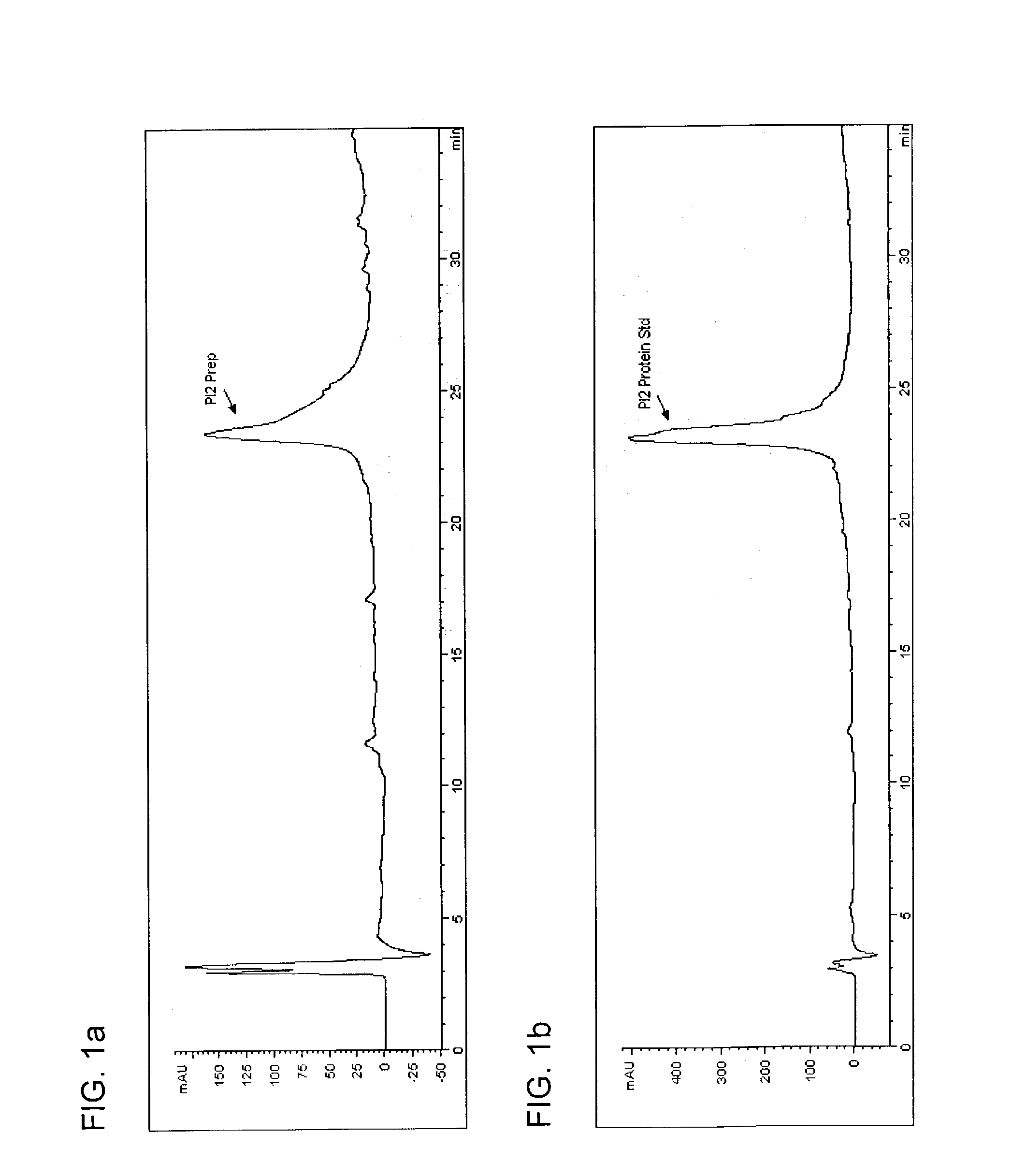Composition and method for reducing post-prandial blood glucose
- Summary
- Abstract
- Description
- Claims
- Application Information
AI Technical Summary
Benefits of technology
Problems solved by technology
Method used
Image
Examples
example 1
Methods
Subjects
[0024]Twenty-six men and 13 women, mean age 35 years (range 23-61 years) with a mean body mass index of 27 (range 23-32) participated in the study. Sample size was based on the study by Schwartz et al. who showed significant decreases in mean post-prandial glucose in six type II diabetic subjects following ingestion of a glucose / protein shake in the presence and absence of a high dose of PI2 (1.5 g). All subjects gave informed consent before the study began, and could withdraw at any time.
Study Design
[0025]Subjects were randomly allocated to receive placebo and two of the three following doses: 7.5, 15, or 30 mg PI2 extract. On each study day subjects arrived at 8.00 AM after a 10 hour fast. They were given breakfast and 500 ml of water to drink throughout the morning, but ate nothing further until the test meal. Height and weight of all subjects were recorded during their first visit. Three and a half hours after breakfast the first blood glucose measurement was made...
example 2
[0047]To better understand if the trypsin / chymotrypsin inhibiting activity of the PI2 protein was related to the glucose response to the potato proteinase inhibitor extract, a preparation that purified the PI2 fraction from the potato proteinase inhibitor extract (abbreviated pPI2) was tested along side a preparation of Bowman-Birk inhibitor after meal challenge. The Bowman-Birk inhibitor used was obtained from Sigma-Aldritch and had a stated purity of greater than 80%. Bowman-Birk inhibitor has similar enzyme inhibiting properties as pPI2. The meal challenge was conducted at a breakfast meal instead of a lunch meal, as in the prior study, and consisted of 390 kcal with 100 kcal from fat and 53 g carbohydrate and was provided to individuals who had been fasting for at least 10 hours. Each participant made two visits to the research center and underwent two meal challenges—one for the placebo and one for an active (15 mg pPI2 or 0.8 mg Bowman-Birk inhibitor) and these treatments were...
example 3
[0058]Five hundred grams of potato tubers were extracted with 213 ml of 1% formic acid solution in a Waring blender for 2.5 minutes. The slurry was centrifuged at 10,000 rpm for 40 minutes. The liquid was decanted and filtered through #4 Whatman filter paper, yielding 486 g of clarified extract. Fifty grams of this clarified extract was poured into each of six 125 ml Erlenmeyer flasks equipped with magnetic stir bars. The amount of NaCl corresponding to Table 6 was added to each flack and stirred until the salt was dissolved. The flasks were then heated on high with stirring on a hot plate until the temperature of the extract reached 70° C. After ambient cooling to room temperature, the solutions were centrifuged at 12,000 rpm for 5 minutes and then analyzed using the above-described reverse phase HPLC method. The reported level of PI2 was calculated by integrating the area of the PI2 peak. The injection volume was 100 μl and the following equation was used to equate peak areas to p...
PUM
| Property | Measurement | Unit |
|---|---|---|
| Length | aaaaa | aaaaa |
| Length | aaaaa | aaaaa |
| Percent by mass | aaaaa | aaaaa |
Abstract
Description
Claims
Application Information
 Login to View More
Login to View More - R&D
- Intellectual Property
- Life Sciences
- Materials
- Tech Scout
- Unparalleled Data Quality
- Higher Quality Content
- 60% Fewer Hallucinations
Browse by: Latest US Patents, China's latest patents, Technical Efficacy Thesaurus, Application Domain, Technology Topic, Popular Technical Reports.
© 2025 PatSnap. All rights reserved.Legal|Privacy policy|Modern Slavery Act Transparency Statement|Sitemap|About US| Contact US: help@patsnap.com



